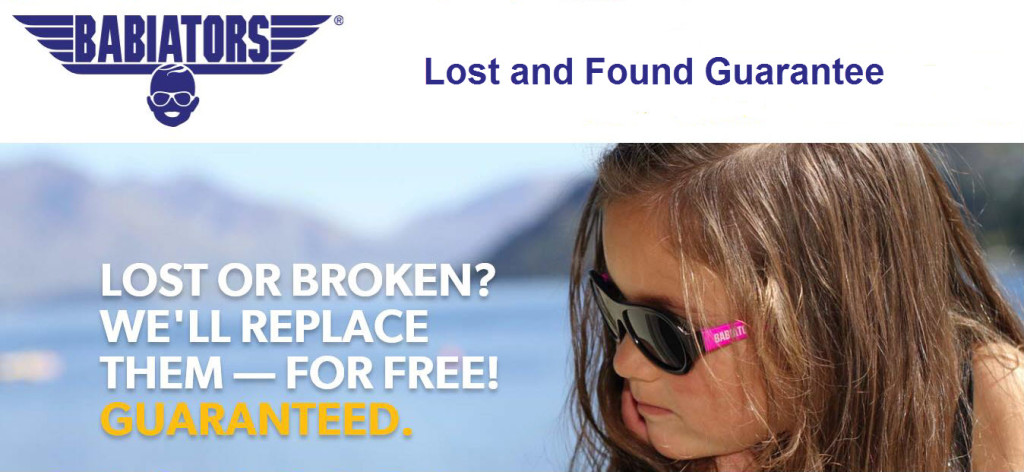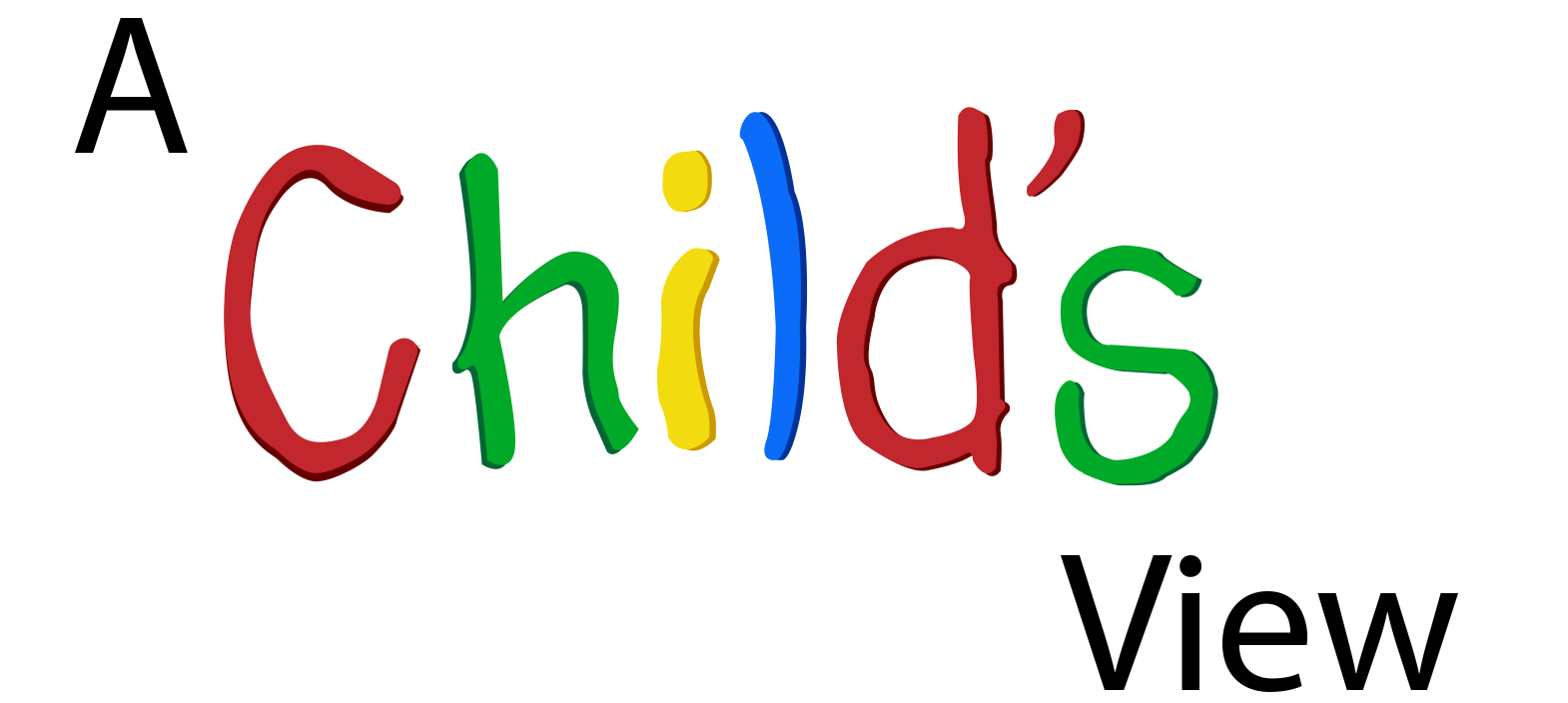
Babiators and A Child’s View believe outfitting your child with Safe, Durable, and Awesome sunglasses is too important to let loss get in the way! So, if your child’s Babiators polarized sunglasses are lost or broken within one year of purchase, Babiators will send you a FREE replacement (all you pay is shipping!). Just register online within 30 days of purchase using the UPC code (12 digit number above the box’s bar code). We’ll give you all the information when you make your purchase.
 A Child’s View pediatric opticians will help you select the best fitting sunglasses for your child—Sunglasses that are comfortable and offer protection against harmful UV rays. We’ll also explain how to care for your new Babiators and work with your child to establish life-long habits of wearing and caring for sunglasses.
A Child’s View pediatric opticians will help you select the best fitting sunglasses for your child—Sunglasses that are comfortable and offer protection against harmful UV rays. We’ll also explain how to care for your new Babiators and work with your child to establish life-long habits of wearing and caring for sunglasses.
We stock only polarized Babiators; so, you can rest assured. Your child will receive the best sun protection at a most affordable price.
For more information on the harmful effects of UV light and to learn how you can protect your children’s eyes from potentially damaging blue-light emission from iPads, iPhones, and computer screens, please see our Whats New tab.
Sunglasses for Children
A Child’s Eye Works Differently
 The lens of a child’s eye does not filter ultraviolet rays with the efficiency of the adult eye. At birth the lens is soft, flexible and almost 95% transparent. After the first decade of life the crystalline lens of the eye begins to yellow. This yellowing of the lens acts as a natural barrier, reducing the UV reaching the retina. At six months of age, 80% of the UV sun rays pass through the lens to the retina. Up to age eight, the lens of the eye will continue to transmit more than 75% of ultraviolet radiation. This figure continues to decrease until by age 25 less than 20% of the UV penetrates the lens. This means that it is more important to protect a child’s eyes from damaging UV rays than it is to protect an adult. Because, the younger the child, the more UV light strikes the retina.
The lens of a child’s eye does not filter ultraviolet rays with the efficiency of the adult eye. At birth the lens is soft, flexible and almost 95% transparent. After the first decade of life the crystalline lens of the eye begins to yellow. This yellowing of the lens acts as a natural barrier, reducing the UV reaching the retina. At six months of age, 80% of the UV sun rays pass through the lens to the retina. Up to age eight, the lens of the eye will continue to transmit more than 75% of ultraviolet radiation. This figure continues to decrease until by age 25 less than 20% of the UV penetrates the lens. This means that it is more important to protect a child’s eyes from damaging UV rays than it is to protect an adult. Because, the younger the child, the more UV light strikes the retina.
Most Damaging
 Blue and blue-violet light is most damaging to the eye, especially when combined with UV and/or IR. While the cornea and lens absorb some of the ultraviolet, high percentages of blue-violet rays still pass through. UV and blue-violet cause cumulative damage to retinal and skin cells.
Blue and blue-violet light is most damaging to the eye, especially when combined with UV and/or IR. While the cornea and lens absorb some of the ultraviolet, high percentages of blue-violet rays still pass through. UV and blue-violet cause cumulative damage to retinal and skin cells.
The Best Sun Lenses for Children
Any of the blue-blocking lenses that absorb light at the shorter blue range of the spectrum also reduces the glare from light scattered by the atmosphere and may improve contrast. However, the greater the absorption, the greater the effect on color perception and since light in the blue-turquoise range is necessary for sleep, care must be taken when selecting lens colors appropriate for children. It is important to wear sunglasses, but the color and density (darkness) of the lens is also very important.
For “all-purpose” use, the sunglass lens color recommended for children is a grey-grey or a grey-green. For practicality and versatility, nothing beats grey lenses with a density (absorptive value) of 70%, especially if the lenses are polarized.
Conclusion
Since children’s eyes are particularly vulnerable to the sun’s UV radiation, they need to wear good quality sunglasses. Better quality lenses with higher UV absorbing properties, in both prescription and non-prescription form, should be placed on children in infancy and should continue to be worn into adulthood. The cornea and lens of the human eye can be surgically replaced, but there is no retina transplants. Only two retinas are issued per newborn, and they have to last a lifetime.
We understand the unique needs of a child and we take our quality commitment seriously. A Child’s View carries only the finest quality products, selected for durability, comfort, safety, and cosmetic appeal. A popular name, logo or high price-tag doesn’t mean a product is durable or safe. We have high standards at every price-point.
If parents do not fully appreciate the potential for ocular damage, especially in the first decade of life, they are unlikely to insist their children protect their eyes from the sun. Parents are dealing with enough stress and have untold demands. Do they really need this? Please read on . . .
- Increased protection from ultraviolet radiation is needed in the first decade of life when the majority of damage occurs.
- Ultraviolet is the most damaging type of electromagnetic radiation.
- Exposure to UVB and UVC is of greatest concern
- Of all visible light, blue* and blue-violet is the most damaging.
- Use of sunscreen, hats and sunglasses throughout life can greatly reduce long-term retinal damage.
*A special note: If your child is light-eyed (blue or green) and if you have a family history of macular degeneration or other retinal disease, it is essential that you reduce the blue-light from hand-held iPhone and iPads, and that you insist your child wear sunglasses and a hat, especially when at the beach or when playing in the snow.
